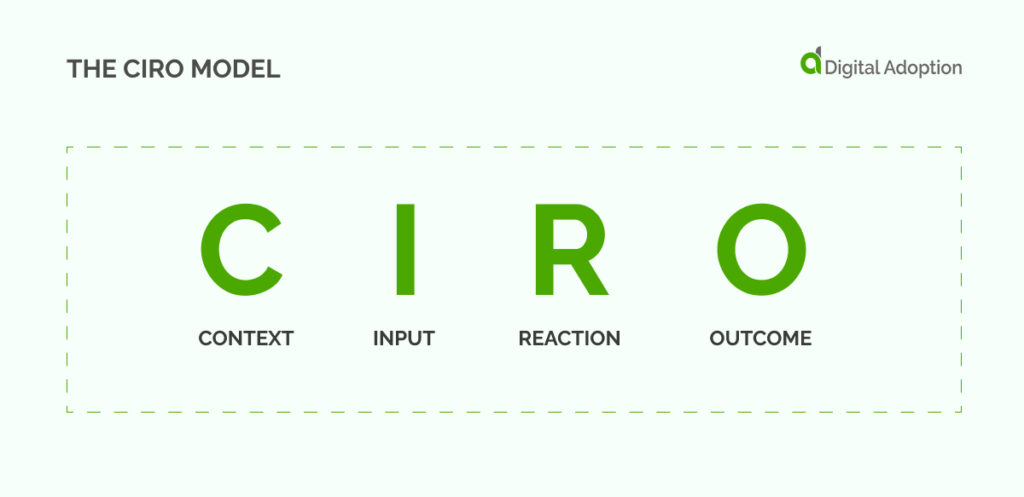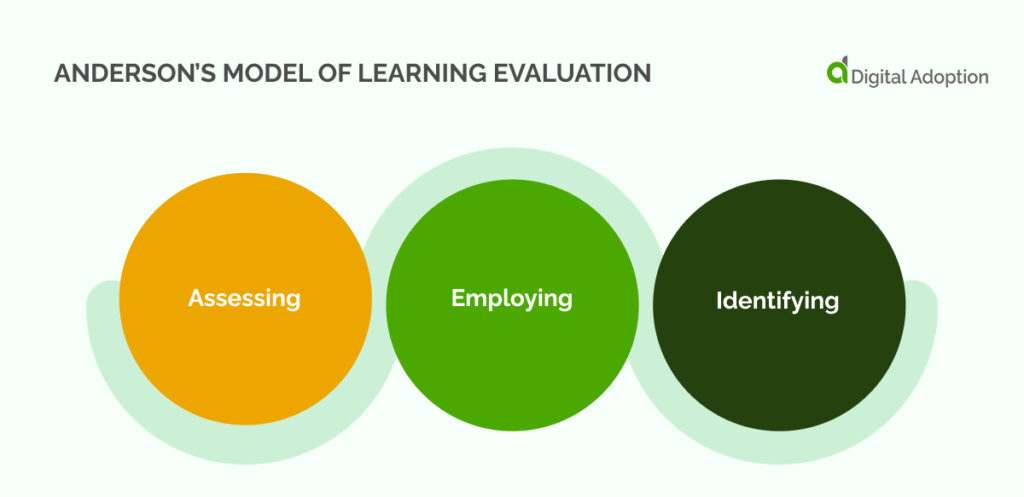You want to offer your staff the best corporate training, but how do you measure the effectiveness of a learning course?
Training evaluation models help you ensure the quality of your training is high, keeping employees well-trained and employee retention and revenues high as you evaluate training programs for ROI, quality, and relevance to your employees.
The latest data from Statista shows that 18% of the challenges in employee training stem from a deficiency in skilled instructors and low engagement, while 10% are attributed to the issue of training content lacking relevance.
Utilizing evaluation models specific to training can effectively address these challenges, contributing to the enhanced success of organizational training programs.
This article explores data-driven methodologies and emerging trends that will influence the training evaluation landscape in the forthcoming year. It delves into effective models set to shape this sphere, offering a detailed examination of tools capable of optimizing training outcomes for enduring success.
What are Training Evaluation Models?
Training evaluation models are systematic frameworks to assess organizational training programs’ effectiveness, efficiency, and outcomes of your employee training methods.
These structured approaches measure learning impact, alignment with goals, and guide data-driven decision-making.
With levels ranging from participant reactions to business impact, these models facilitate continuous improvement and showcase learning initiative value to stakeholders when you include them in your employee training plan.
Top 8 Training Evaluation Models and How to Use Them

Explore the intricacies of effective training assessment with an in-depth examination of the top 6 training evaluation models and their practical applications.
1. Kirkpatrick Model

The number one spot for training evaluation models is the Kirkpatrick Model, which so many organizations use for its ease of use and effectiveness.
What it is
The Kirkpatrick Model, a renowned L&D evaluation framework, analyzes the efficacy and outcomes of employee training programs. It is also the core and inspiration for many other evaluation models.
How to use it
Considering both informal and formal training styles, the model assesses against four criteria levels:
- Reaction: Measure learner satisfaction through feedback forms.
- Learning: Assess understanding and skill development via pre and post-tests and hands-on assignments, showing the achievement of training objectives.
- Behavior: Evaluate the application of learned skills in employees’ daily work.
- Results: Verify if business objectives tied to corporate training, like increased productivity and reduced errors, are achieved.
Who it’s best for
The Kirkpatrick Model is suited to learning and development professionals as it supports a range of applications in enterprise training environments.
2. The CIRO Model

Second place goes to the commonly used and popular CIRO Model.
What it is
The all-encompassing CIRO (Context, Input, Reaction, Outcome) training evaluation method developed by Peter Warr, Michael Bird, and Neil Rackham provides a complete approach to evaluating the efficacy of training initiatives.
How to use it
Much like the Kirkpatrick Model, the CIRO model assesses against four criteria levels but does so in a more holistic way:
- Context: Context encompasses the organizational and environmental factors impacting training effectiveness, understanding culture, goals, and specific training needs. Context evaluation ensures alignment with the larger organizational strategy and addresses real business challenges.
- Input: Input evaluation centers on appraising the training program’s design and content. It assesses instructional materials, curriculum design, and trainer qualifications to ascertain the training materials’ relevance, engagement, and effectiveness in fostering successful learning experiences.
- Reaction: Reaction evaluation assesses participants’ immediate responses and satisfaction with the training. It includes gathering feedback through surveys, questionnaires, or discussions to gauge participants’ perceptions of the training’s relevance, clarity, and overall quality. This process aids in pinpointing strengths and areas for enhancement within the training program.
- Outcome: Outcome evaluation measures the tangible impact of training on participants and the organization. It scrutinizes whether the training resulted in desired behavioral changes and enhancements in job performance. This evaluation may include pre-and post-training assessments, observations, and performance metrics to gauge how the training accomplished its intended goals.
Who it’s best for
This model is most suitable for training management programs. It doesn’t focus on behavior and may not be suitable for individuals at lower organizational levels. Contextually, it revolves around identifying and assessing training needs.
3. The Phillips ROI Model

The third model in the list is the Phillips ROI model.
What it is
The Phillips ROI Model is an approach that links training program costs to tangible outcomes to ensure organizations get a return on their investment.
How to use it
Expanding upon the Kirkpatrick Model, Phillips ROI categorizes data from various employee training programs to assess five areas of training quality.
- Response: Managers use brief surveys to gather data on participants’ reactions to the training they provide.
- Learning: Participants engage in pre- and post-training MCQ surveys or quizzes, aiding managers in assessing the extent of knowledge acquisition.
- Application and Implementation: The Phillips model gauges the effectiveness of training and delves into the reasons behind its success or failure. It integrates qualitative (experience-based data) feedback and enhances organizational training program enhancements.
- Impact: The model facilitates an in-depth analysis of the training content and various factors influencing participants’ ultimate performance.
- Return on Investment: Employing cost-benefit analysis it aligns impact data with tangible monetary gains and intangible benefits. This data serves as concrete evidence for training managers to demonstrate the value of training to higher authorities.
Who it’s best for
This model is best for teams, including learning and development professionals and CFOs (chief financial officers), to ensure ROI on learning investments.
4. The Brinkerhoff Model

The Brinkerhoff Model is in fourth place as it sees everyday use, although it has slightly more specialized use cases than the above models.
What it is
The success case method, crafted by Robert O. Brinkerhoff, is a thorough training evaluation model. Its aim is to pinpoint and scrutinize the effects of training initiatives by concentrating on remarkable success or failure.
How to use it
This model has five steps, beginning with identifying the instances of success.
- Identify instances of success: Recognize individuals or groups showcasing exceptional performance resulting from the training. These success cases signify positive outcomes directly linked to the training program.
- Identify instances of failure: Recognize individuals or groups unable to achieve desired performance improvements despite undergoing the training. These failure cases highlight potential barriers or limitations of the training program.
- Conduct interviews: Engage in comprehensive interviews with both success and failure cases. These interviews aim to collect detailed insights into learners’ experiences with the training program, outlining successful elements and challenges in applying the gained knowledge.
- Analyze findings: Examine the interview data to unveil common themes, patterns, and trends. This analysis aids in identifying critical success factors and obstacles hindering training effectiveness.
- Action planning: Formulate action plans based on feedback and recommendations to enhance the training program. These plans may involve refining content, delivery methods, and support systems or addressing specific challenges encountered by participants.
Who it’s best for
This model is best for larger enterprises and has been successful for NGOs and government departments. The Brinkerhoff Evaluation Institute offers courses for those who want to implement this model.
5. Kaufman’s Model of Learning Evaluation

Kaufman’s Model of Learning Evaluation is in fifth place but remains effective.
What it is
Kaufman’s model, rooted in the Kirkpatrick Model, serves as a response and enhancement to Kirkpatrick’s approach. It seeks to elevate and refine the evaluation process.
How to use it
Kaufman’s model introduces five levels of training assessment.
Kaufman’s model is another model built on the foundation of the Kirkpatrick Model. It is a response or reaction to Kirkpatrick’s model that aims to improve upon it in various ways. Kaufman’s six levels of training evaluation include:
- (a) Input: Training materials used to bolster employee training initiatives.
(b) Process: Assess the acceptability and efficiency of the training procedures.
- Acquisition: Examine whether learners have successfully gained the knowledge and are applying it in their job roles.
- Application: Evaluate participants’ effectiveness in applying their gained knowledge in their daily responsibilities.
- Organizational outcomes: Gauge the overall benefits for the organization, encompassing performance enhancements and a thorough cost-benefit or cost-consequence analysis.
- Societal outcomes: Evaluate the broader societal benefits resulting from and contributing to the client’s and society’s assessment.
Who it’s best for
Kaufman’s model is effective for any learning and development team, especially teams focused on allocating resources for learning.
6. Anderson’s Model of Learning Evaluation

Anderson’s Model of Learning Evaluation streamlines training assessment through a three-stage organizational-level cycle, emphasizing strategic alignment for efficient evaluation by learning and development professionals.
What it is
Anderson’s Model of Learning Evaluation is a strategic and streamlined three-stage organizational-level cycle for efficient training assessment in learning and development.
How to use it
The Anderson learning evaluation model encompasses a three-stage evaluation cycle implemented at the organizational level to gauge training effectiveness.
This model places a greater emphasis on aligning training goals with the organization’s strategic objectives.
The three phases of Anderson’s Model involve:
- Assessing current alignment with strategic priorities.
- Employing diverse methods to evaluate and assess the impact of learning.
- Identifying the most pertinent approaches for the organization.
Who it’s best for
Anderson’s Model works well for L&D professionals who want a simplified evaluation tool they can implement quickly because of its small number of steps.
7. The ADDIE Model

What it is
The ADDIE (Analysis, Design, Development, Implementation, Evaluation) Model is a systematic instructional design framework that guides the development of effective training programs.
How to use it
It involves a five-step process, starting with analyzing training needs, followed by designing the program, developing materials, implementing the training, and concluding with a comprehensive evaluation to measure its effectiveness.
Who it’s best for
Ideal for instructional designers and training developers, providing a structured approach to create, deliver, and assess training programs.
8. The Successive Approximation Model (SAM)

The Successive Approximation Model (SAM) is an agile instructional design approach emphasizing iterative development and continuous feedback for efficient and adaptable training creation.
What it is
The Successive Approximation Model (SAM) is an agile instructional design model that emphasizes iterative development and continuous feedback throughout the training creation process.
How to use it
SAM involves a series of rapid iterations, focusing on collaboration and frequent evaluations with stakeholders. It starts with an initial prototype, followed by successive refinements based on feedback until the final product is achieved.
Who it’s best for
The Successive Approximation Model is suited to organizations and teams looking for a flexible and adaptive approach to instructional design, especially in dynamic and developing learning environments.
Training Evaluation Models: Best Practices

Executing training evaluation models necessitates meticulous planning and execution to ensure precise and meaningful outcomes. Consider the following best practices:
Align training objectives with your evaluation model
Ensure that the evaluation mirrors the specific goals and objectives of the training program. Each evaluation level should resonate with the intended outcomes, from knowledge acquisition to behavioral change and organizational impact.
Include stakeholders from the start
Engage key stakeholders, including trainers, participants, and organizational leaders, in the evaluation process design. Their input ensures the model captures relevant aspects of the training and addresses their expectations.
Build reliable data collection methods
Design data collection methods that are reliable and suitable for each evaluation level. This practice includes pre- and post-training surveys, assessments, interviews, observations, and performance metrics. Ensuring data accuracy and consistency is crucial for meaningful analysis.
Establish baseline measures
Before implementing the training, establish baseline measures to assess the initial state of participants’ knowledge, skills, and behaviors. This baseline serves as a reference point for evaluating the impact of the training and identifying improvements.
Collect honest feedback
Foster a safe and non-judgmental environment that encourages participants to provide candid feedback about the training. Anonymous surveys or focus groups enable participants to share their thoughts openly, providing valuable insights for improvement.
Share evaluation results
Share the evaluation results with stakeholders clearly and transparently. Highlight successes and areas for improvement, demonstrating how the data aligns with the training objectives. Effective communication builds trust and underscores the value of evaluation efforts.
Review and improve the ongoing evaluation process
Treat the learning model as a way of ongoing improvement for your learning programs.
Regularly review evaluation methods for each learning tool, incorporate feedback, and refine the process to enhance its effectiveness over time.
Choose the right training evaluation model that prioritizes your staff

Selecting an effective learning model is crucial for maximizing staff development. Still, it is only valid when you deploy the right tool that suits your organization’s staff needs.
This factor is crucial to success, so prioritize models aligned with your organization’s goals, training objectives, and employee needs and use an employee training template where necessary. Consider user-friendly interfaces, customizable features, and comprehensive analytics to ensure accurate assessments when you collect employee feedback on training.
Selecting an appropriate training evaluation model facilitates precise progress measurement, targeted identification of areas for improvement, and fundamental enhancement of skills and performance in your staff.
Independent research is imperative, given the diversity of training evaluation models, ensuring ongoing alignment with the developing needs of your staff throughout each business year.













